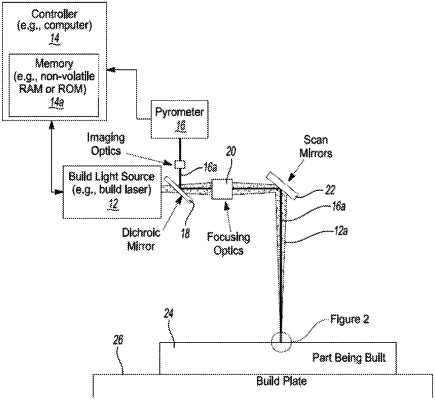| CPC G01N 21/8806 (2013.01) [B22F 10/80 (2021.01); B29C 64/386 (2017.08); B33Y 50/00 (2014.12); G01N 21/95 (2013.01); G01N 2201/06113 (2013.01)] | 17 Claims |

|
1. A system for detecting anomalies in additively manufactured microlattice parts involving struts, the system comprising:
an energy source configured to generate a beam of energy for creating a melt pool in a layer of feedstock material being selectively fused to make a part in an additive manufacturing operation;
an optical sensor configured to receive a thermal emission signal reflected from the melt pool which is indicative of a temperature of the melt pool formed from the feedstock material at a known location on a layer of the feedstock material, while the feedstock material is in a process of being melted and being fused at the known location; and
a controller responsive to the optical sensor and configured to receive and analyze data relating to an intensity of the received thermal emission signal over a selected period of time, where the selected period of time depends on a size of the strut being created, to determine if an anomaly exists at the known location, the received thermal emission signal relating to obtained temperature values at the known location;
the controller using the obtained temperature values to generate a statistical prediction if the part is being built as designed or if the part is defective; and
wherein the received thermal emission signal travels co-axially with the energy beam for at least a portion of a length of travel of the energy beam.
|